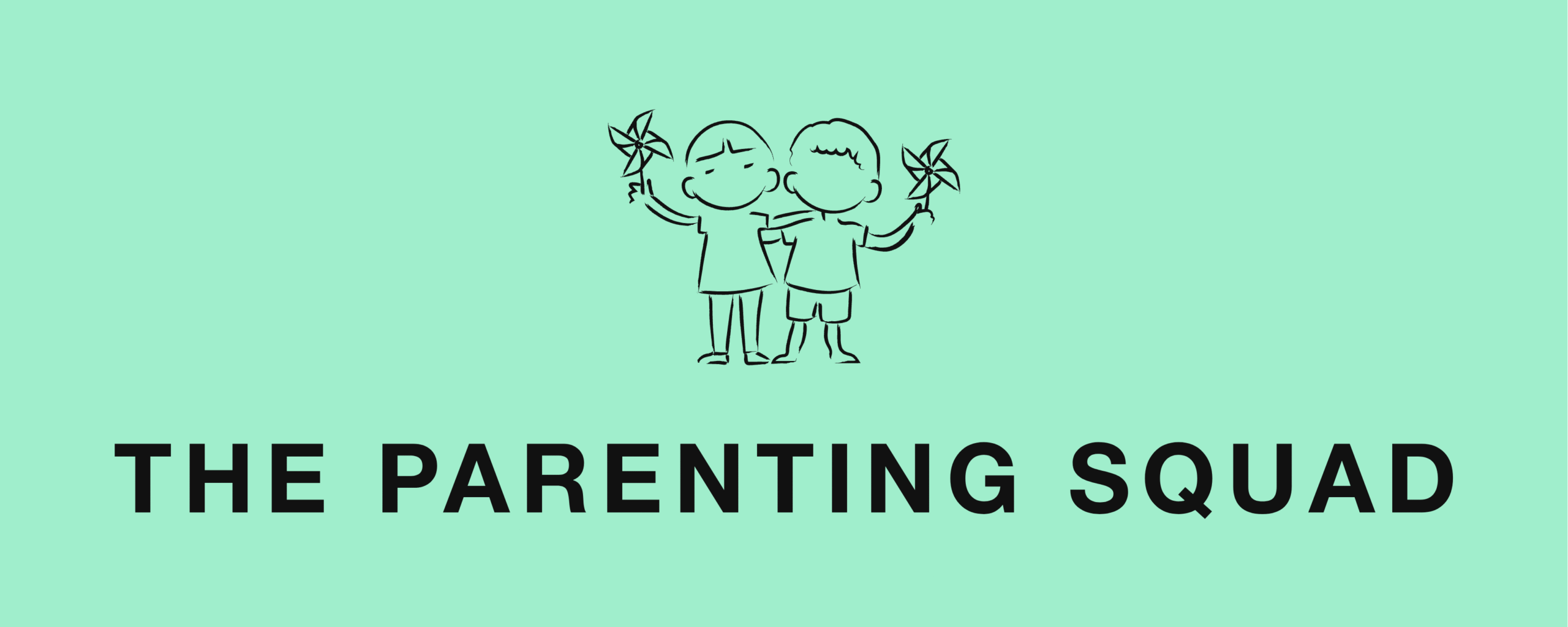Your Complete Guide to Pregnancy Stages in Months (Plus What to Expect!)
You’re staring at two pink lines on a pregnancy test, heart racing with excitement and maybe a touch of panic. Questions flood your mind faster than morning sickness hits on an empty stomach. “What’s happening to my body right now?” “When will I actually look pregnant?” “Is it normal to feel like I’ve been hit by a truck at 8 weeks?”
You’re not alone in feeling overwhelmed by the 40-week mystery that lies ahead. Pregnancy can feel like boarding a train without knowing the stops along the way. One day, you’re googling “Can I eat sushi?” and the next you’re wondering why your favorite perfume suddenly smells like a chemical disaster.
Understanding pregnancy stages month by month gives you that roadmap you desperately need. It helps transform the unknown into the anticipated, turning anxiety into excitement (well, most of the time). When you know what to expect—from the exhaustion that makes you fall asleep standing up to those magical first kicks—you can better prepare for this incredible journey. Pregnancy typically lasts about 9 months, and understanding pregnancy timing is important for tracking your baby’s development and prenatal milestones.
Here’s your complete month-by-month guide covering symptoms, baby development, and practical tips for each stage. Remember, every pregnancy is beautifully unique, but having a general roadmap helps you feel more confident navigating this amazing transformation. Pregnancy is divided into three trimesters, each with its own milestones and changes for both you and your baby.
The First Trimester: Months 1-3
Month 1: The “Wait, Am I Really Pregnant?” Phase
Welcome to the land of missed periods and phantom symptoms! You might find yourself analyzing every twinge, wondering if that’s implantation cramping or just yesterday’s questionable lunch choice.
Your body is working overtime even though you can’t see it yet. After fertilization, the fertilized egg travels to the uterus for implantation. This process begins shortly after your last menstrual period, which is used by healthcare providers to calculate your pregnancy timing.
As this happens, the amniotic sac begins to form around the embryo, providing protection and support during these early weeks. Your tiny embryo is busy implanting itself into your uterine lining—no wonder you feel exhausted. Common early symptoms include fatigue that makes you want to nap in grocery store aisles, tender breasts that make hugs feel like contact sports, and nausea that can strike any time (despite the “morning” sickness label).
What’s happening with the baby: Your little one starts as a cluster of cells and begins forming the neural tube, which will become their brain and spinal cord.
Your action plan: Start taking prenatal vitamins with folic acid, schedule your first prenatal appointment, and begin avoiding alcohol, raw fish, and deli meats. Don’t panic if you had a glass of wine before you knew—just make changes moving forward. A blood test at your healthcare provider’s office can confirm pregnancy and check for important health markers.
Month 2: When Reality Hits
If month one was the preview, month two is when pregnancy symptoms take center stage. Your hormone levels are climbing like a rocket, which explains why you might cry at dog food commercials or feel nauseated by foods you previously loved.
“Pregnancy brain” isn’t just a myth—you might find yourself putting orange juice in the cupboard or forgetting words mid-sentence. Your sense of smell becomes superhero-level sensitive, turning your partner’s cologne into your kryptonite.
What’s happening with the baby: By the third week, the nervous system begins to form, marking the start of rapid growth and development. Major organs start developing, including the heart, which begins beating around week 6. Your baby is about the size of a raspberry and growing rapidly.
Your survival tips: Eat small, frequent meals to combat nausea, keep crackers by your bedside, and don’t feel guilty about takeout dinners. Your body is building a human—that’s exhausting work!
Month 3: The Home Stretch of Trimester One
Good news—you’re almost through the first trimester! The third month marks the end of the first trimester, and by 3 months, the fetus is considered fully formed with all major body systems in place. Many women start feeling slightly more human around week 12 as hormone levels begin to stabilize. The risk of miscarriage drops considerably after this point, and miscarriage drops significantly at this stage, which is why many couples choose to share their news now.
You might still feel tired and nauseous, but there’s often light at the end of the tunnel. Your uterus is growing and may start showing as a small bump, especially if this isn’t your first pregnancy.
What’s happening with the baby: All major organs are formed, and your baby is officially a fetus! Fetal development during the third month includes the completion of major organs and body systems. They’re about the size of a lime and are developing fingernails and vocal cords.
Decision time: Many parents decide when to announce their pregnancy around this time. There’s no right or wrong choice—share when it feels right for your family.
The Second Trimester: Months 4-6 (The “Golden Period”)
Month 4: Finding Your Groove
Welcome to what many consider the “sweet spot” of pregnancy! The fourth month marks the start of the second trimester and is an important time for a prenatal visit. Energy levels often return, nausea usually subsides, and you might actually feel like yourself again (just a more tired, emotional version).
Your baby bump is becoming more noticeable, which means maternity clothes shopping and the joy of strangers offering unsolicited advice. Embrace the bump—you’re growing a human, and that deserves celebration!
What’s happening with baby: Your little one is about the size of an avocado and starting to develop their unique fingerprints. They’re also beginning to hear sounds from outside the womb. During a prenatal visit in the fourth month, the fetal heartbeat can often be detected, providing reassurance about your baby’s health and development.
Partner tip: This is a great time for partners to get involved by talking to the baby or attending prenatal appointments together.
Month 5: The Halfway Mark
Congratulations—you’re halfway there! This month often brings one of pregnancy’s most magical moments: feeling your baby’s first movements. Feeling the fetus moving for the first time is called quickening, and the baby’s movements become more noticeable during this month. These “quickening” sensations might feel like bubbles, flutters, or gentle pokes.
Your anatomy scan usually happens around week 20, offering an exciting peek at your baby and the possibility of learning their gender (if you choose to find out). Prepare for tears—seeing your baby on that screen never gets old.
What’s happening with the baby: They’re about the size of a banana and developing their sleep-wake cycles. Their hearing is getting stronger, so go ahead and play them some music! Monitoring baby’s movements is an important way to track their health and development.
Body changes: You might notice your belly button starting to pop out and some round ligament pain as your uterus expands. Invest in a good pregnancy pillow—your hips will thank you.
Month 6: Preparing for the Final Stretch
You’re now in the sixth month of pregnancy, officially in your final month of the second trimester, and your baby’s movements are becoming more pronounced. Those gentle flutters have likely transformed into definite kicks and jabs that might surprise you during meetings or while sleeping.
This is prime time for nursery planning, registry creating, and maybe a babymoon if you’re feeling up to it. Your energy levels are still relatively good, making this an ideal time for preparation activities.
What’s happening with the baby: About the size of an ear of corn, your baby is developing fat layers and starting to accumulate body fat, which is important for temperature regulation after birth. The baby’s lungs are continuing to develop and mature in preparation for breathing outside the womb. They might even hiccup, which you’ll feel as rhythmic movements.
Work considerations: Start thinking about maternity leave plans and transitioning your responsibilities. Having these conversations early reduces stress later.
The Third Trimester: Months 7-9 (The “Almost There” Phase)
Month 7: Getting Serious About Prep
Welcome to the third trimester—the final countdown begins! You are now seven months pregnant, marking a key milestone as you enter this important stage. You might notice your energy levels dipping again as your body works harder to support your growing baby. Heartburn, shortness of breath, and frequent bathroom trips become regular companions.
This is when pregnancy gets real in the best and most uncomfortable ways. Your baby’s movements are strong enough that your partner can feel them from the outside, which creates beautiful bonding moments.
What’s happening with the baby: About the size of a pineapple, your baby’s brain is developing rapidly, and they’re practicing breathing movements with amniotic fluid. At seven months, your baby is becoming more baby-like and is approaching full term.
Preparation mode: Consider signing up for childbirth classes, creating your birth plan, and researching pediatricians. Knowledge helps reduce anxiety about the unknown.
Month 8: The Nesting Instinct Kicks In
If you suddenly feel an overwhelming urge to organize every closet and scrub baseboards, congratulations—you’ve officially entered nesting mode! This instinct helps prepare your space (and mind) for baby’s arrival.
Physical discomforts may intensify as your baby grows bigger and space gets tighter. Sleeping becomes an Olympic sport requiring multiple pillow arrangements and frequent position changes.
What’s happening with the baby: Your little one is about the size of a butternut squash and gaining weight rapidly. The baby continues to mature and develop, with significant weight gain and ongoing physical changes during this month. Their bones are hardening, except for the skull, which remains soft for delivery.
Hospital bag time: Start gathering items for your hospital bag, including comfortable going-home outfits for both you and the baby. Pack early—babies don’t always stick to schedules!
Month 9: The Final Countdown
You’ve made it to the finish line! You are now in the ninth month of pregnancy, and the last few weeks are crucial for your baby’s final development. Your baby is considered full-term, and you might experience signs that labor is approaching: increased Braxton Hicks contractions, your baby “dropping” lower, and possibly losing your mucus plug.
Every day feels like “Is today the day?” while you balance excitement with impatience. Your body has done incredible work growing your baby, and you’re almost ready to meet them face-to-face.
What’s happening with the baby: Fully developed and ready for the outside world! They’re about the size of a watermelon and have likely settled into a head-down position near the birth canal in preparation for delivery. Most babies move into this position during the last few weeks, and most babies are born during this month. Babies born at this stage are considered full term and are typically ready for life outside the womb.
Labor watch: Learn the signs of real labor versus false labor, know when to call your healthcare provider, and remember that first babies often take their time making their grand entrance.
Ready for Your Amazing Journey?
Understanding pregnancy stages in months provides a helpful framework for this incredible experience, but remember that every pregnancy story is unique. Some women sail through with minimal symptoms, while others face more challenges—both experiences are completely normal.
Trust your instincts throughout this journey. You know your body better than anyone, so don’t hesitate to communicate with your healthcare providers about any concerns or questions. They’re your partners in ensuring a healthy pregnancy for both you and your baby.
Consider joining pregnancy communities, whether online or in person, for additional support and shared experiences. There’s something powerful about connecting with other parents who understand the joy of feeling a baby’s first kick or the challenge of finding comfortable sleeping positions.
As you navigate these nine months of transformation, be patient with yourself. Your body is performing one of nature’s most incredible feats—creating new life. Some days you’ll feel like a pregnancy goddess, and other days you’ll wonder if you’ll ever feel human again. Both are part of this beautiful, messy, amazing journey to parenthood.
The adventure ahead will test you, change you, and ultimately reward you with the greatest gift imaginable. You’re stronger than you know, and you’re going to be an amazing parent. Welcome to one of life’s greatest adventures—you’ve got this!






